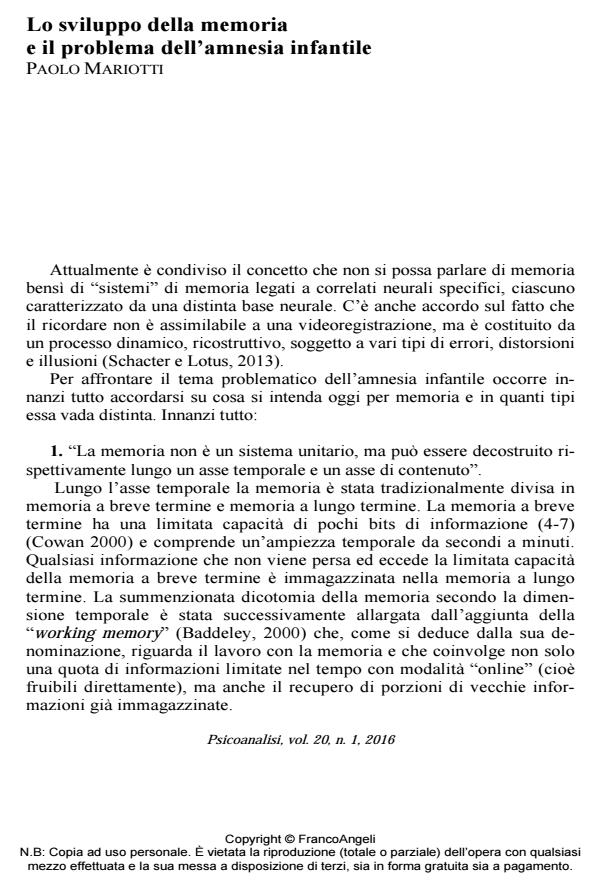Lo sviluppo della memoria e il problema dell’amnesia infantile
Journal title PSICOANALISI
Author/s Paolo Mariotti
Publishing Year 2016 Issue 2016/1
Language Italian Pages 15 P. 83-97 File size 198 KB
DOI 10.3280/PSI2016-001006
DOI is like a bar code for intellectual property: to have more infomation
click here
Below, you can see the article first page
If you want to buy this article in PDF format, you can do it, following the instructions to buy download credits

FrancoAngeli is member of Publishers International Linking Association, Inc (PILA), a not-for-profit association which run the CrossRef service enabling links to and from online scholarly content.
Childhood amnesia refers to the inability of children and adults to recall events that took place during their infancy. Freud originally coined the term on the basis of his clinical experience; subsequent empirical investigations have confirmed many of Freud’s original observations, but not his explanation for the phenomenon. For a better understanding of the infantile amnesia origin we need to focus our attention on the recent concept of memory, on its development, from the onset of memory in the early infancy, to the following development of autobiographical memory. However, this coincides with Freud’s hypothesis that childhood amnesia is not a unitary phenomenon, but rather it consists of at least two separate phases. Finally, childhood amnesia can be considered paradigmatic in the relationship between Neurosciences and Psychoanalysis.
Keywords: Memory, memory development, childhood amnesia, neural development, infants
Paolo Mariotti, Lo sviluppo della memoria e il problema dell’amnesia infantile in "PSICOANALISI" 1/2016, pp 83-97, DOI: 10.3280/PSI2016-001006